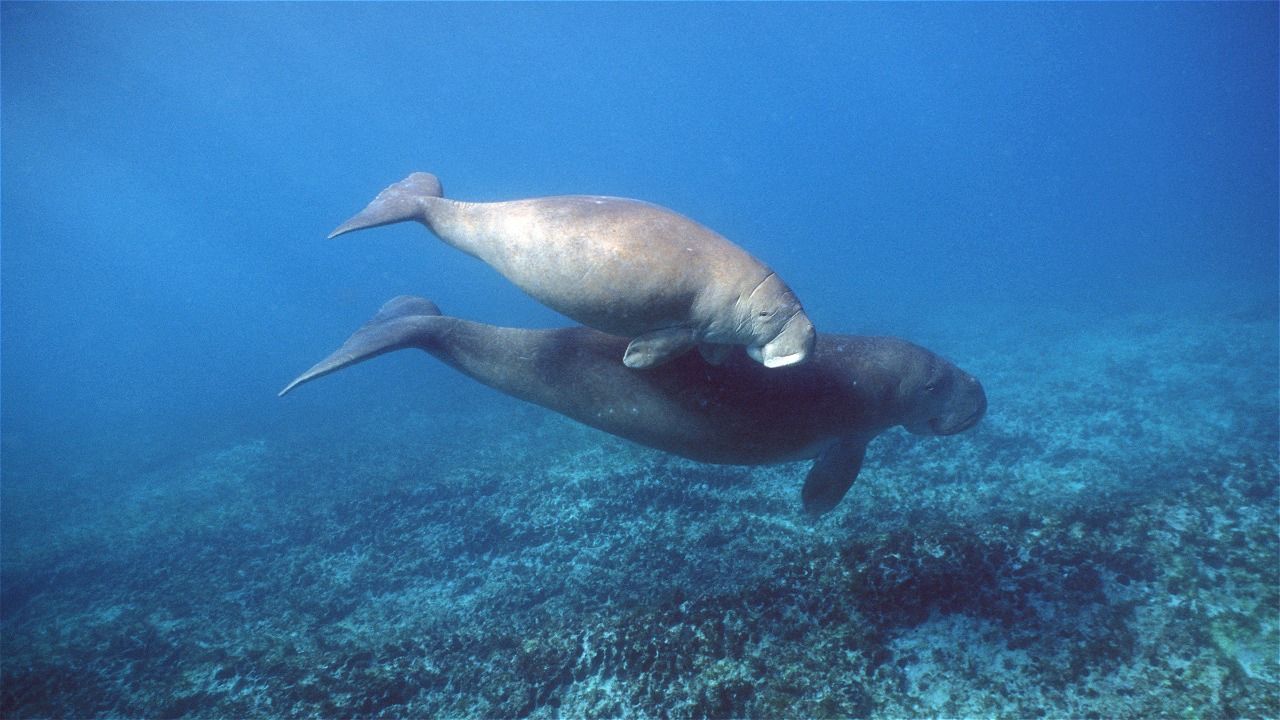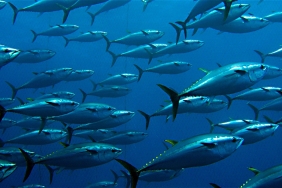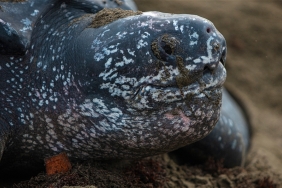SURVEY OF DUGONGS AND THEIR HABITAT IN ALOR DISTRICT
Juraij, Dwi Suprapti, Casandra Tania - Marine Species Conservation Team
The dugong (Dugong dugon) is one of 35 marine mammal species found scattered in Indonesian waters, especially in seagrass ecosystems. Although large in stature and weighing up to 600 kg, these lactating marine animals have a friendly behavior and live in special association with seagrass ecosystems as their feeding habitat.
Dugongs have complex life threats. Dugongs are naturally slow to reproduce as they take 10 years to mature and 14 months to give birth to a new individual. Other threats that can be encountered are the accidental capture of dugongs by fishing gear (bycatch) and massive hunting for the utilization of meat, fangs, and tears which are allegedly of high economic value.
The waters of Alor, Alor Regency, East Nusa Tenggara, including the Pantar Strait Sanctuary (SAP), are often reported to have dugongs around seagrass habitats. However, research on dugongs and seagrasses in this area has only been limited to general observations of behavior. Therefore, on May 29-June 6, 2016, a joint team from DKP Alor Regency, Muhammadiyah Kupang University, BKKPN Kupang, BPSPL Denpasar, IPB and WWF Indonesia conducted further research on dugongs and seagrasses in Alor Regency.
Based on observations of seagrass distribution in Alor waters, 7 seagrass species from two families were identified, namely: 1) Hydrocharitaceae family (Enhalus acoroides, Thalassia hemprichii and Halophila ovalis). 2) Family Potamogetonaceae (Cymodocea rotundata, Cymodocea serrulata, Halodule uninervis and Syringodium isoetifolium). The highest seagrass cover and density was found at Mali Beach station, with a cover value of 68% with the type of Halophila ovalis (565 - 1082 stands/m2).
In addition, based on the analysis of feeding trails conducted on the dugong feeding habitat, the average length of the trails obtained was 80-100 cm, while the width was 15-20 cm. The feeding trails were overgrown with pioneer seagrass species such as Halophila ovalis, Halodule uninervis and Cymodocea rotundata. The results of visual and aerial observations for 5 days, only one Duyung was found in the Alor Waters area. The Duyung moves every day in the seagrass area in the water area, where the seagrass is also a feeding habitat for Green Turtles.
The interesting thing in this survey was the interaction between the Duyung and the Turtle, which both shared a habitat and was documented during aerial observations using a drone. The Duyung was seen trying to be friendly and approached the green turtle for a long time, while the green turtle seemed relaxed and did not show any aggressive movements or attempts to avoid as a reaction to being disturbed or threatened.
Mermaids were also documented playing with green turtles on the Egyptian coast in October 2016. In the video recorded by a diver, the dugong was seen kissing, hugging, and riding the green turtle (Imbler, 2016). The cause of these interactions between dugongs and green turtles is still unknown and documentation of these interactions is limited.
In-depth studies and regular monitoring are needed because there is still much to know about dugongs and seagrasses, ranging from population estimates, status, distribution to interactions between dugongs and other biota and threats to habitat, illegal use and tourism activities. Data and information on these shy marine mammals will be very useful to support the effectiveness of the management of the Pantar Strait SAP area.
Imbler, S. 2016. Watch a Duyung Ride a Sea Turtle - No, Really. http://www.azula.com/Duyung-rides-sea-turtle/





